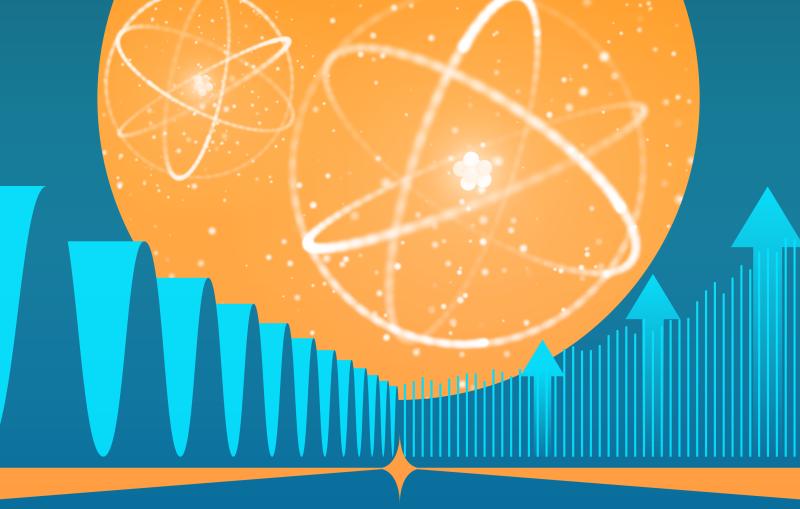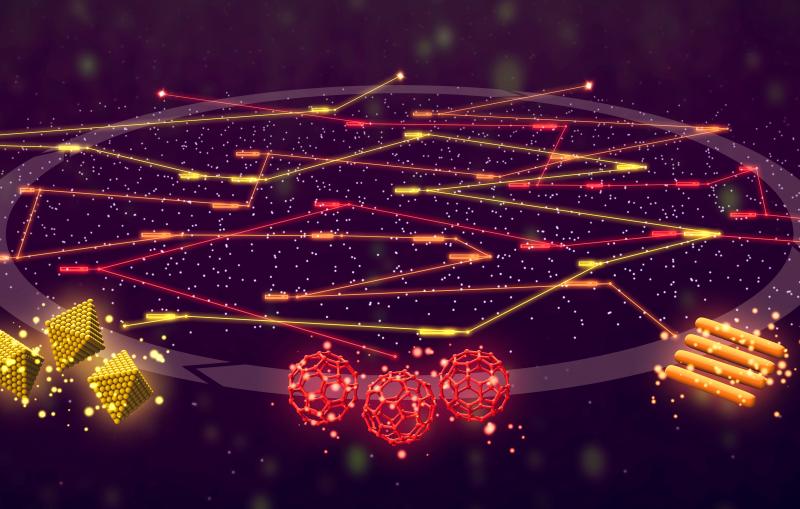Innovative target design leads to surprising discovery in laser-plasma acceleration
SLAC researchers studying laser-driven proton acceleration introduced a self-replenishing water sheet target to address the inefficiency of replacing targets after each laser pulse. The new target had an unanticipated side effect, resulting in a naturally focused, more tightly aligned proton beam.
Scientists have developed a groundbreaking method for generating fast, bright proton beams using a high-repetition-rate laser-plasma accelerator. This work, published in Nature Communications, resolves several long-standing challenges and ushers this technology to the threshold of real-world applications – all thanks to a stream of water.
“These exciting results pave the way for new applications of relativistic high-power lasers for applications in medicine, accelerator research, and inertial fusion,” said Siegfried Glenzer, professor of photon science and the director of the High Energy Density Science division at the Department of Energy's SLAC National Accelerator Laboratory.
The need for new types of proton beams
Proton beams are high-speed streams of charged particles known for their ability to damage or alter the materials they interact with. They deposit their energy in specific locations, providing precision that is not possible with other sources such as X-rays. This characteristic makes them valuable for diverse applications from treating tumors to etching tiny features on microchips and semiconductors. But generating these ultrafast, energetic beams is challenging.
Conventional particle accelerators, such as synchrotrons, rely on a series of electromagnets to accelerate, steer and focus particle beams. Though these accelerators have driven countless discoveries in fundamental science, their size limits their ability to be deployed in industrial and clinical applications. For example, some advanced medical centers use proton beams to target cancerous tissues, damaging tumors while sparing healthy cells. Developing smaller, more affordable proton beam sources could expand the range of medical treatments offered by such centers and open entirely new fields for this technology.
The promise of laser-plasma acceleration
Enter laser-plasma accelerators (LPAs). LPAs use high-intensity lasers to strike a target, generating charged particle beams that reach comparable speeds to those produced using traditional accelerators – but in a fraction of the distance. Scientists are exploring LPAs as a compact, cost-effective way to generate proton beams, but several technical challenges have hindered their progress.
One challenge arises from the high-intensity laser, which destroys the targets after each pulse, requiring a new target for every shot. Another issue is the beam divergence – proton beams produced by LPAs typically spread out like a floodlight rather than maintaining a narrow focus. Both the need for target replacement and the beam divergence significantly reduce the efficiency of LPA systems.
Just add water
In this recent study, researchers made an unexpected breakthrough, simultaneously resolving multiple problems although they had only aimed to address one.
Working at the STFC Rutherford Appleton Laboratory’s Central Laser Facility, the team tested a novel target, developed by researchers at SLAC, to tackle the inefficiency of replacing targets after each laser pulse. Instead of using a traditional solid target, they introduced a thin sheet of water – a self-regenerating stream that replenishes after each shot. When the laser struck the water, it generated a proton beam as anticipated.
But then, something surprising happened. The evaporated water formed a vapor cloud around the target, which interacted with the proton beam to create magnetic fields. These fields naturally focused the beam, resulting in a brighter, more tightly aligned proton beam.
Compared to similar experiments with solid targets, the water sheet reduced the proton beam’s divergence by an order of magnitude and increased the beam’s efficiency by a factor of one hundred. The proton beam exhibited remarkable stability, consistently operating at five pulses per second over hundreds of laser shots.
“This effect was completely unexpected,” said Griffin Glenn, a Stanford University PhD student involved in designing the water sheet target and conducting data analysis and the second author on the paper. The multitude of variables in this experiment – including the detailed properties of the laser, water sheet, and the vacuum environment – made such predictions impossible.
However, after observing the phenomenon, the team used experimental data to model and gain a deeper understanding of the underlying forces driving the effect. The team’s findings suggest that this approach could be scaled to higher-energy systems, enabling even brighter and more energetic proton beams.
“This work has shifted the whole paradigm,” Glenzer said. “Finally, we are no longer totally reliant on simulations. We can now drive the physics from an experimental point of view, testing different laser intensities, target densities, and environmental pressures. The entire physics regime is in front of us.”
Notably, the proton beam consistently delivered the equivalent of 40 Gray with each shot, a standard radiation dosage used in proton therapies never before achieved with LPAs operating at this repetition rate. Furthermore, the results were achieved using an easily accessible low-energy laser system, marking a major advance toward preparing LPAs for practical applications in medicine and industry.
This research took place at the UK STFC Rutherford Appleton Laboratory’s Central Laser Facility and was funded in part by DOE Office of Science, DOE National Nuclear Security Administration and the National Science Foundation.
Citation: Streeter, M.J.V., Glenn, G.D., DiIorio, S. et al., Nature Communications, 24 February 2025 (10.1038/s41467-025-56248-4)
Contact
For questions or comments, contact SLAC Strategic Communications & External Affairs at communications@slac.stanford.edu.
About SLAC
SLAC National Accelerator Laboratory explores how the universe works at the biggest, smallest and fastest scales and invents powerful tools used by researchers around the globe. As world leaders in ultrafast science and bold explorers of the physics of the universe, we forge new ground in understanding our origins and building a healthier and more sustainable future. Our discovery and innovation help develop new materials and chemical processes and open unprecedented views of the cosmos and life’s most delicate machinery. Building on more than 60 years of visionary research, we help shape the future by advancing areas such as quantum technology, scientific computing and the development of next-generation accelerators.
SLAC is operated by Stanford University for the U.S. Department of Energy’s Office of Science. The Office of Science is the single largest supporter of basic research in the physical sciences in the United States and is working to address some of the most pressing challenges of our time.






